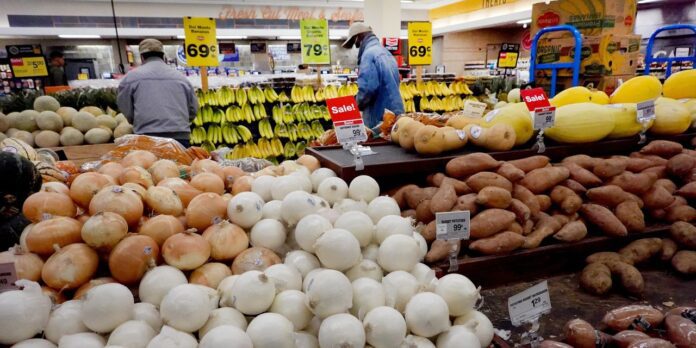[ad_1]
Consumers’ retail spending shifted in September as they adjusted to changing costs amid strong inflation and rising interest rates.
They spent more on increasingly expensive essentials such as food and less on items with falling prices like gasoline and furniture, according to two government data reports this week.
Overall U.S. retail sales—which comprise consumer spending mostly on goods such as furniture, vehicles and groceries but also at restaurants—were unchanged last month from August, after a revised 0.4% gain in August from July, the Commerce Department said Friday.
Unlike the government’s inflation data, retail sales aren’t adjusted for inflation, so some spending swings reflect price changes rather than shifts in the amounts bought. Big-ticket purchases also can move in response to rising or falling borrowing costs.
Consumer prices rose a seasonally adjusted 0.4% in September from August, up from 0.1% the month before, the Labor Department said Thursday. So-called core prices, which exclude food and energy items, increased 0.6% in September, the same as in August, and up from 0.3% in July—a sign of persistent, strong and broad price pressures.
Below are examples of the categories that saw significant sales and price movements in September, according to the two reports.
Food
Shoppers spent more at the market, restaurants and bars last month as overall food prices shot up 0.8% in September from the month before, the same pace as in August, and 11.2% from September of 2021. Prices rose at record rates from the year before for several basics on household shopping lists.
Prices for food consumed at home—essentially groceries—climbed 0.7% in September from August, and 13% from a year earlier.
Butter and margarine prices leapt at a record 32.2% from the year before, according to U.S. data going back to 1998. Flour prices jumped 24.2% on the year in September, its fastest such increase in U.S. records going back to 1978, partly due to disruptions in grain markets caused by the war in Ukraine.
Prices also rose rapidly on the year for breakfast sausage (up 14.7%) and for fruits and vegetables (up 10.4%.)
Cafeteria tabs soared at a record pace too: Prices for food at employee sites and schools nearly doubled, rising 91.4% from September 2021.
Consumer-price index, select items

Services less energy services
Meats, poultry, fish and eggs
Goods less food and energy

Services less
energy services
Meats, poultry,
fish and eggs
Goods less
food and energy

Services less
energy services
Meats, poultry,
fish and eggs
Goods less
food and energy
Gasoline
Drivers spent less at the pump as gasoline prices dropped for the third month in a row, falling 4.9% in September from August. They were up more than 18% from the same month a year ago.
The average U.S. price for a gallon of regular gasoline prices was $3.90 on Friday, according to energy data provider OPIS, down from a June peak of just over $5 a gallon.
Goods
Consumers saw some relief while shopping for clothing, bedroom furniture, used cars and other goods in September compared with August, as supply-chain pressures eased, companies discounted their bloated inventories and a strong dollar lowered prices for imported goods.
Shoppers boosted their purchases at clothing stores as apparel costs dropped 0.3%, and retailers cut prices to clear out items.
SHARE YOUR THOUGHTS
What impact is inflation having on your spending? Join the conversation below.
Rising mortgage costs and the related housing-market slowdown are denting demand for home furnishings, sending sales and prices of furniture and appliances lower in September from August.
Meantime sales at motor vehicle and parts dealers fell in September from August as prices for new and used cars moved in opposite directions.
Prices for new vehicles rose 0.7% in September from August as supply-chain issues and limited inventory still hamper production. Used automobile and truck prices fell for the third month in a row, declining 1.1% as the shortage of preowned vehicles continues to ease.
Write to Harriet Torry at [email protected]
Copyright ©2022 Dow Jones & Company, Inc. All Rights Reserved. 87990cbe856818d5eddac44c7b1cdeb8
[ad_2]
Source link

